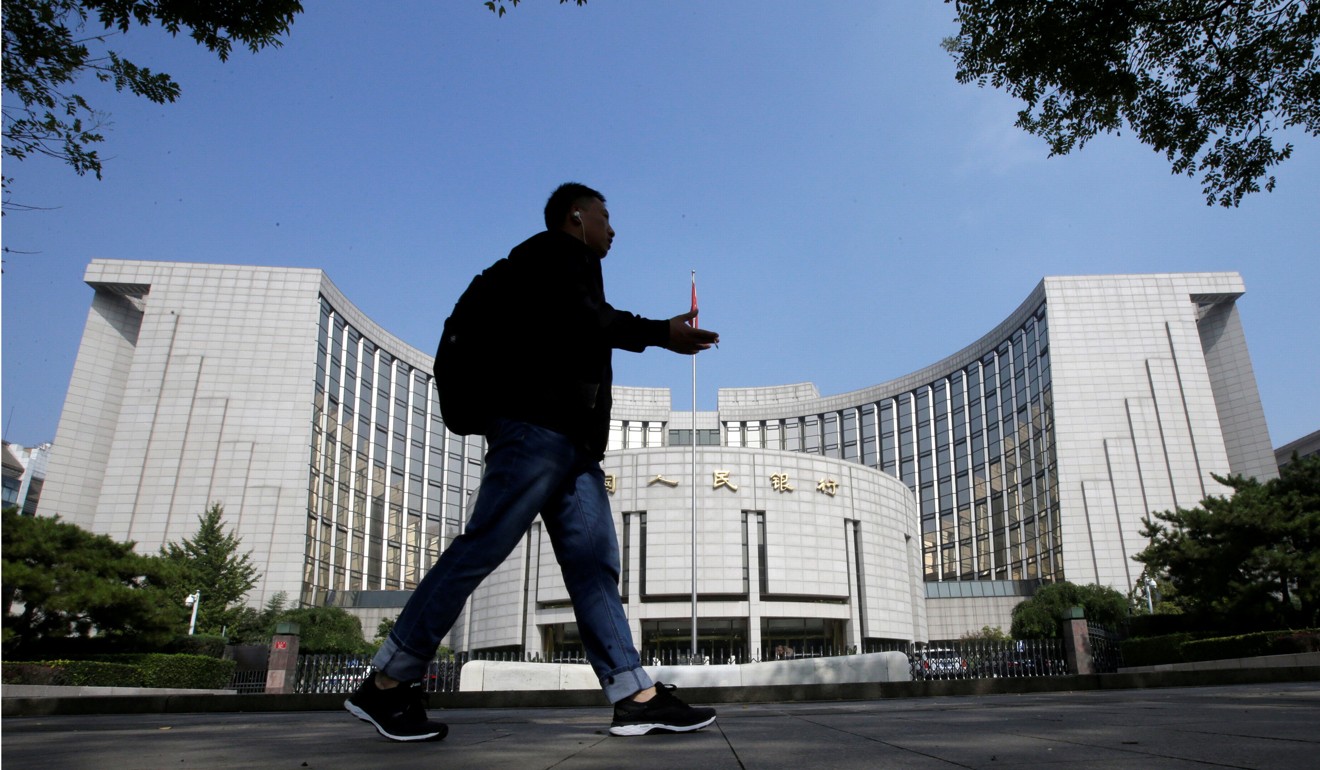
China’s central bank adds local government bonds into calculation for social financing
People’s Bank of China widens scope of indicator to reflect sharp rise in issuance of debt instruments in recent months
China’s central bank has changed the way it calculates how much money flows into the real economy to reflect recent changes in the availability of local government funding.
Total social financing – a figure calculated monthly that previously comprised bank loans, corporate bonds and initial public offerings – is one of the most watched indicators as it provides a reading of how much money is flowing from the financial system into factories, infrastructure projects, farms and shops. If the number is growing, it is largely seen as the central bank loosening its policy stance and a pointer to stronger economic activity in the months ahead.
However, the People’s Bank of China (PBOC) said on Wednesday that it has widened the definition of the indicator to include special purpose bonds issued by local governments – a type of financing the central government has strongly encouraged regional authorities to use in recent months to offset the negative effects of the trade war with the United States.

As a result, the September figure for total social financing – including 738.9 billion yuan (US$106.84 billion) worth of special purpose bonds – was 2.21 trillion yuan, up from 1.52 trillion yuan in August. Without the bonds added, the figure would have been 1.47 trillion yuan.
The revised calculation method made economists’ forecasts for September’s social financing effectively meaningless. The median figure in a Bloomberg poll of 24 economists was 1.53 trillion yuan.
The central bank did not send any warning of the change before releasing the data, but said in a statement later that the decision was taken because there had been a sharp increase in the issuance of special purpose bonds in recent months.
Ding Shuang, chief China economist at Standard Chartered, said it was reasonable for the PBOC to adjust its calculation methods as money raised through the special purpose bonds would eventually be spent on infrastructure or urban development projects.
Chinese Communist Party newspaper People’s Daily counters ‘pessimistic’ views on trade war impact
But it would also affect the consistency of the indicator and cause confusion in the market, he said. “The market may be confused if the statistic method is always changing,” he said.
The change comes at a time when many economists are finding it increasingly difficult to interpret economic and financial data series provided by Beijing. Earlier in the year the National Bureau of Statistics caused a stir by adjusting the sample size it uses to measure industrial profits.
Shen Jianguang, chief economist at JD Finance, wrote in an article published on social media just hours before the central bank released the social financing figures that a “lack of trust” in official economic data was one of the underlying reasons for the poor investor confidence in China’s economy.
In its statement, the PBOC released monthly figures for the value of local government special bond issues dating back to January 2017, along with the adjusted totals for social financing. The September figure for bond issues was 80 per cent higher than the 410.6 billion yuan reported for August, which in turn represented a 122 per cent increase from 185.1 billion yuan in July.
China economic health check may show slowing GDP growth in wake of trade war
The central bank has been releasing total social financing data since 2011 when non-bank financing became increasingly important to China’s borrowers. Two months ago it added asset-backed securities and loans considered write offs to the indicator.
China’s new bank loans in September totalled 1.38 trillion yuan, or about two thirds of the total social financing.
How much money will be made available in the form of local government special purpose bonds is set by the finance ministry. Its original budget for this year was 1.35 trillion yuan, but 1.7 trillion yuan worth of the debt instruments were issued in the first nine months alone.

